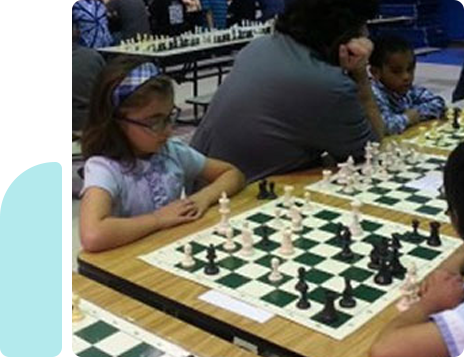
Our elementary program, which spans kindergarten through fifth grade, offers rigorous academics combined with engaging activities that make learning exciting and fun. Small class sizes (capped at 15 per classroom) facilitate the kind of individualized attention that enables each student to learn at his or her own level. Whether your child is achieving above grade level, or needs some extra help, our teachers can meet each student’s individual needs.
Our Elementary School Programs
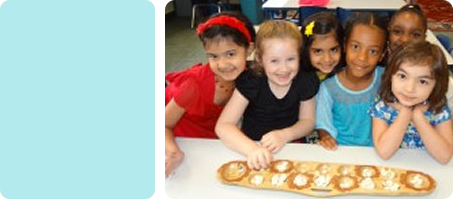
Kindergarten
“My kindergartener can do 4th grade public school math. I am really excited about [her] educational achievements. And I love the small class sizes….” – PWA’s Parent Satisfaction Survey
PWA’s kindergarten is a full-day program that strives to engage and challenge our students academically. Our program consistently garners accolades from satisfied parents who find that their children graduate from kindergarten with an advanced understanding of concepts that the public school does not introduce until first grade.
Our kindergarten language arts program is phonics-based, and introduces children to the writing process. Students also utilize a math textbook from McGraw Hill.
Curriculum
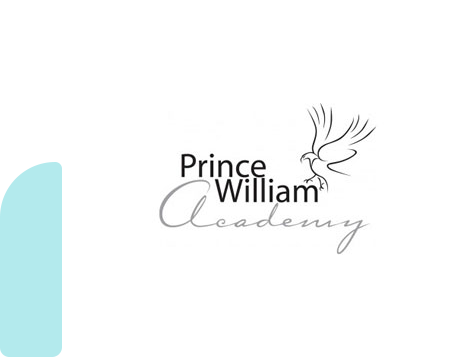
Language Arts
Students are introduced to writing sentences with correct grammar, capitalization, and punctuation. Students learn spelling rules and master weekly spelling tests, including sight words. Our kindergarten students are able to recognize and use phonics, including special sounds, in reading.
Mathematics
Students are introduced to concepts covered include addition facts through 18, two-digit addition and subtraction, counting and combining coins, telling time to the hour and half- hour, and skip counting.
Science
Students explore concepts in science that relate to health and human biology, other living organisms and environments, Earth cycles and systems, seasons, weather, Earth’s resources, and matter.
Social Studies
Students learn from their teachers and one another about their immediate environment. Kindergarteners explore concepts related to patriotism, national symbols, good citizenship, and the importance of following rules and respecting the rights and property of other people.
Fine Arts
Students expand upon their knowledge of colors and mediums by learning the Color Wheel. They also further employ the elements of design using various mediums.
Technology
Students continue to develop their keyboarding skills by learning to typing their names, addresses, phone numbers and a few sentences. These students use software to enhance their keyboarding techniques and learn the layout of a keyboard. They also learn to utilize appropriate buttons, menu choices, and commands to manipulate the computer when completing learning tasks. During technology class students learn the difference between hardware and software and create and edit text documents.
Music
Kindergarteners begin to build their knowledge of a variety of songs and types of music through music class. Children at this level also perform in school-wide musical events, including singing songs in the languages they are learning in our World Languages program.
Physical Education
Students are introduced to the various types of equipment housed in our gym, and learn to use them and the space of the gym properly and respectfully. In class, they participate in activities that help them improve basic motor skills, and gain an appreciation for the importance of physical activities.
World Languages Program
Students in this age group are able to identify basic greetings and vocabulary terms that coincide with the curriculum themes, and they sing themed songs. Teachers utilize visual aids to reinforce vocabulary, and engage students in listening, speaking, and writing activities. They identify basic commands and expand on previously learned vocabulary terms. The students are introduced to art and music, and cover topics including the alphabet, clothing, family, feelings, counting to 30, and pets. Language teachers engage their students in singing songs that develop a child’s musical talent and ear for correct pronunciation and intonation. Three times a year, students participate in special performances for their parents during the Winter Program, Mother’s Day program, and an end-of-the-year program.
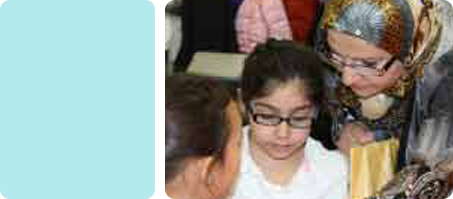
First Grade
Our first grade program is top-notch, with our first grade students consistently performing above grade level by the end of the school year. Our first grade teachers enable their students to meet high expectations within a loving and supportive environment.

Second Grade
“My kids have excelled academically and in many other areas at PWA. They not only receive excellent instruction, but the teachers have also been nurturing which is a key component when you work at a grade level higher than public schools. Kids need that love and encouragement to push themselves further.” – From PWA’s Parent Satisfaction Survey
Our second grade offers a warm and comfortable setting, combined with rigorous and individualized academics.
Our second graders are immersed in a literature-rich environment. At the second grade level, we emphasize writing, spelling, grammar and reading, and our students utilize workbooks to support learning these concepts.
In math, students work on concepts including monetary values, whole numbers, regrouping, multiplication, division, fractions, and geometry, utilizing a hybrid curriculum that employs both online and classroom teaching. Social studies focuses on historical cultures, and seeks to instill understanding of the heritage and contribution of great civilizations of the past to the world. In science, students focus on a broad range of skills to understand the natural world. Scientific processes, living systems, and changes in the natural world are some of the concepts explored, along with the human body and health-related needs and changes.
Curriculum

Language Arts
In second grade, students engage in daily journal and creative writing, and continue to develop their cursive writing abilities. Our second graders continue to strengthen their phonetic skills, and learn consonant blends and vowel patterns. At this grade level, readers strengthen their fluency and implement reading strategies for further comprehension. Students practice relating the literature they read to real life experiences. Teachers also continue to focus on penmanship and cursive writing skills, correct grammar, capitalization, and punctuation.
Mathematics
In second grade, students use the My Math McGraw-Hill textbook to grasp concepts generally taught on a third grade level. We have transitioned to a hybrid mode of instruction, combining online instruction with hands-on projects, whole-class and small-group instruction, and collaborative peer grouping. Students also use the Assessment and Learning in Knowledge Spaces program (ALEKS) as a support and enrichment tool. Concepts covered in math include place value through the thousands, comparing and ordering numbers, rounding numbers up to the nearest hundred, addition and subtraction strategies, estimating sums and differences. Multiplication and division are formally introduced in second grade, and the topics students learn include multiplication and division strategies, multiplication and division facts through 12s, inverse operations, basic algebraic equations, writing expressions, and solving two-step equations. The students also learn fraction properties, measurement (mass, volume, liquid capacity, distance), elapsed time, interpreting and recording data and graphs, perimeter and area, and geometric properties of polygons
Science
Beginning in second grade and continuing through the remaining grades, teachers use a hybrid delivery method for science instruction. Topics covered in this grade include organisms and their habitats, Earth’s surface, weather, water cycles, natural resources, rocks and minerals, fossils, recycling, and the solar system. Students also learn about the scientific method, and create science fair experiments by researching a topic of their choice. All students complete science fair projects and participate in the school-wide science fair. In addition to science class and mini lab experiments in class, students visit the science lab a minimum of twice per month. During science lab, students participate in whole group exercises as well as individual or pair-and-share learning activities.
Social Studies
We Do Our Part
The second grade social studies curriculum is robust and involves learning about the past and present of the United States and US traditions, as well as mapping skills, landforms, and weather and climate. The Pearson curriculum uses “essential questions” to engage the students in the learning process. Students also utilize the 21st Century Learning Online Tutor to practice reading, graphing, mapping and critical thinking skills.
Fine Arts
Students further explore the effective use of colors, including the use of complementary colors in their artwork. They are also introduced to the basic concept of creating a focal point in their artwork.
Technology
By second grade, students become proficient at keyboarding. Our students use different software programs to enhance learning in language arts, math, social studies, and geography. They learn to create a one- to two-page document using a word processing program, learn to use publishing programs, demonstrate a basic understanding of computer vocabulary, understand how to send and retrieve e-mail, and use the Internet to access information for research.
Students can also recognize that information may be available in a variety of formats and are able to name and use sources of information. At the end of their second grade year, students should be able to demonstrate the ability to perform a wide variety of basic tasks using technology, including saving, editing, printing, viewing, and graphing and presenting information.
Music
Second graders learn to sing in a clear tone and develop a repertoire of songs, which they are encouraged to sing both alone and with others. They use appropriate movement to music. Second graders also learn to recognize sudden and gradual changes in expressive qualities of music, and can identify melodic patterns that move upward, downward, and remain the same. They also develop a vocabulary to explain how music expresses ideas, experiences, and feelings.
Physical Education
Second graders continue to develop fine and gross motor skills, and concepts of body and space awareness. They also learn to apply their individual skills to whole group play.
World Languages Program
The curriculum for this age group builds the foundation for proper articulation and use of punctuation. Students engage in speaking, reading, and writing activities, and study basic vocabulary and expressions, classroom commands, and cultural topics.
Language teachers engage their students in singing songs that develop a child’s musical talent and ear for correct pronunciation and intonation. Three times a year, students participate in special performances for their parents during the Winter Program, Mother’s Day program, and an end-of-the-year program.
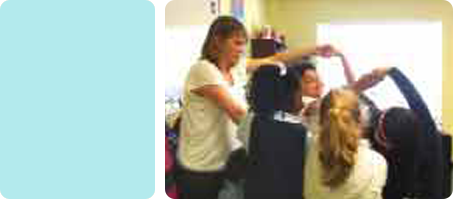
Third Grade
“I love the small classroom size, the teacher interaction and care and concern for their students, and the desire to push the students past the typical standard of education and learning.” – From PWA’s Parent Satisfaction Survey
Third grade students read a variety of literature from our McGraw-Hill Reading Wonders collection. Students focus on the use of effective communication skills, reading and comprehension strategies, and research methods. The students plan, draft, revise, and edit stories, and employ their cursive writing skills.
We also utilize McGraw Hill texts for math in third grade. Students review concepts introduced in previous years and focus on division with whole numbers, and problems involving addition and subtraction of fractions and decimals. Students develop a wide range of skills and strategies for solving a variety of problem types.
In social studies, the standards for third grade allow students to develop an understanding of elements of civilizations and their interrelationship by focusing on several early civilizations.
The third grade standards for science place emphasis on conducting investigations using the scientific process. The students will study simple machines, earth science, matter, life and living processes and systems, and earth and space.
Grade Three Curriculum Overview

Language Arts
Students engage in daily journal and creative writing, and continue to develop their cursive writing abilities. They continue to strengthen their phonetic skills, and learn consonant blends and vowel patterns. At this grade level, readers strengthen their fluency and implement reading strategies for further comprehension. Students practice relating the literature they read to real life experiences. Teachers also continue to focus on penmanship and cursive writing skills, correct grammar, capitalization, and punctuation.
Mathematics
Students build upon basic multiplication facts to become proficient in multiplying larger numbers. Students also refine their estimation skills for computations, and investigate the relationships between and among points, lines, segments and rays. Students build upon concepts introduced in previous years and learn to recognize place value through the hundred thousand, create and interpret bar graphs, line graphs, pictographs, and circle graphs, multiply and divide multi-digit numbers, and understand and use customary units of measurement. Third graders also learn about fractions, mixed numbers, improper fractions, and adding and subtracting fractions. The concepts taught with fractions are developed further through exploration of the relationship between fractions and decimals. Students also learn to recognize place value through the hundred thousands, and to create and interpret bar graphs, line graphs, pictographs, and circle graphs.
Science
Students continue to use the hybrid science curriculum as they delve further into science content. Students study organisms and their habitats, Earth’s patterns, contents of matter, and energy, including force and motion. They utilize the skills they acquire in the lab in order to plan and create science fair projects. All students complete science fair projects and participate in the school-wide science fair. In addition to science class and mini lab experiments in class, students visit the science lab a minimum of twice per month. Students participate in whole group exercises as well as individual or pair and share exploratory learning during science activities.
Social Studies
We Are Connected
Students learn about their community and its local role in shaping the nation. They also learn about how the needs and the wants of people are met. Students cover the branches and levels of the government, good citizenship, individual rights, and how life has changed throughout the history of our nation.
Fine Arts
Using knowledge of the elements of design and the Color Wheel, students create compositions with monochromatic, complementary, and a triadic color schemes. Portraits, landscapes, and still lifes are addressed and imitated.
Technology
Students demonstrate proficiency at keyboarding. Different software programs are used to enhance learning in language arts, math, social studies, and geography. They learn to create a one- to two-page document using a word processing program, learn to use publishing programs, demonstrate a basic understanding of computer vocabulary, understand how to send and retrieve e-mail, and use the Internet to access information for research.
Students can also recognize that information may be available in a variety of formats and are able to name and use sources of information. At the end of their third grade year, students should be able to demonstrate the ability to perform a wide variety of basic tasks using technology, including saving, editing, printing, viewing, and graphing and presenting information.
Music
Students sing in a clear tone, develop a repertoire of familiar songs, and sing within the range of an octave. The students learn to notate and perform melody and rhythm patterns from the treble staff using traditional notation, and recognize that music is divided into measures. Students respond to music with movement by performing dances, games, dramatizing songs, stories, and poems, and learn to employ creativity in a variety of music experiences. Students learn to recognize music symbols within a composition, use music terminology to explain their functions, and identify the four orchestral families by sight and sound. They also explore the music of world cultures, and participate in various performances throughout the year, including our end-of-the-year musical. In third grade, students collaborate with others to create a short musical presentation.
Physical Education
Students demonstrate motor and non-motor movement, as well as balance. Through sports play, they learn to accept challenges and resolve conflicts, and should display sportsmanship in a variety of activities.
World Languages Program
Students develop and use real life conversational skills. Students also learn about the culture through holiday traditions, art and stories. Students engage in writing and learn how to ask questions. They also learn how to explain their likes and dislikes. Language teachers engage their students in singing songs that develop a child’s musical talent and ear for correct pronunciation and intonation. Three times a year, students participate in special performances for their parents during the Winter Program, Mother’s Day program, and an end-of-the-year program.
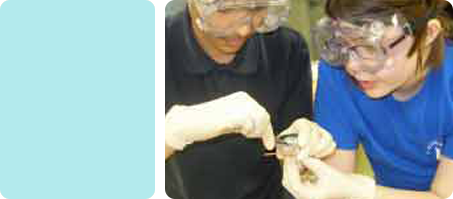
Fourth Grade
“We are very pleased with PWA. Our son attended another school and he learned more in three months at PWA than he did attending an entire year there. He is eager to learn [and] has built strong relationships with his classmates and his teacher.” – From PWA’s Parent Satisfaction Survey
Our fourth graders learn to communicate effectively in large and small group settings. Students read classics and contemporary literature by a variety of authors and hone strategies for reading comprehension and analysis.
Social studies for the fourth grade focuses on the United States by examining history, geography, economics, the humanities, and citizenship. International lessons are integrated into the units for easy comparison. Students also study the history of Virginia through activities-based class projects.
Math in the fourth grade places emphasis on developing proficiency in using whole numbers, fractions, and decimals to solve problems. Students learn to collect, display and analyze data in a variety of ways and solve probability problems. Students also solve problems involving area and perimeter, classify triangles, and plot points in the coordinate plane. We keep students actively engaged while learning mathematics, using concrete materials and appropriate technologies such as calculators and computers. Students also learn to identify real-life applications of the mathematical principles they acquire, and discover the ways their new knowledge can be applied to science and other disciplines.
Fourth grade science stresses the importance of using information, analyzing data, and validating experimental results. Our fourth grade science curriculum emphasizes the importance of defining variables in experimentation, and making simple predictions from picture, bar, and line graphs. Questioning and hypothesizing become more detailed at this level. Students are introduced to basic principles of electricity and to the concept of energy as it relates to work and machines.
Grade Four Curriculum Overview

Language Arts
Our fourth grade students compose letters and journal entries, and research reports with cited sources. Their writings demonstrate coherent organization and sufficient details. Students in fourth grade read a variety of texts with a higher level of fluency and expression. Fourth graders are also able to utilize root words, prefixes, suffixes, and context clues in order to analyze unfamiliar words.
Mathematics
Our fourth graders learn to compare and order fractions and decimals, complete multiplication and division problems, and identify geometric figures and concepts. Students also collect, display and analyze data in a variety of ways, and solve probability problems. Students also learn how to measure and calculate area and perimeter, classify triangles, and plot points in the coordinate plane. Students are actively engaged while learning mathematics, using concrete materials and appropriate technologies such as calculators and computers. Students also learn to identify real-life applications of the mathematical principles they acquire, and discover the ways their new knowledge can be applied to science and other disciplines.
Science
Our fourth grade also follows the hybrid science curriculum. Students examine science concepts regarding basic principles of electricity, motion, the solar system, relationships between plants and animals, and the importance of Virginia’s natural resources. Fourth graders are also expected to plan and create science fair projects, and conduct weekly experiments in the science lab. All students complete science fair projects and participate in the school-wide science fair.
Social Studies
Regions of Our Country and Virginia Studies
The fourth grade social studies curriculum is composed of two main topics: Regions of Our Country and Virginia Studies. The comprehensive curriculum engages students in learning about the nation’s economy, the geography of the US, and its five major regions. The Pearson curriculum uses “essential questions” to engage the students in the learning process. Students are also able to utilize the 21st Century Learning Online Tutor to practice reading, graphing, mapping and critical thinking skills.
During the Virginia Studies portion of the class, students develop the skills needed to analyze, interpret, and demonstrate knowledge of Virginia’s history, from the cultures of its native peoples and the founding of Jamestown to the present.
Fine Arts
Students learn to use major and minor focal points effectively, and to depict movement between the two. The elements of design are easily recognized, and students regularly critique aesthetics.
Technology
Our fourth and fifth grade students continue to develop their keyboarding skills, demonstrate an understanding of computer theory, develop basic technology skills and vocabulary, select and use technology appropriate tasks and operate peripheral devices. Students begin to process, store, retrieve, and transmit electronic information. Furthermore, these students build upon their keyboarding skills and their knowledge of various publishing programs to create a three- to four-page document using their knowledge of word processing.
Within these publishing applications, students create, edit, and format a document with text and graphics. They also develop and populate a spreadsheet with data, and learn to create and present a multimedia presentation. Finally, our fourth and fifth grade students demonstrate the ability to choose appropriate resources when completing assignments in various content areas, and learn to engage in proper and safe communications using a variety of communication tools and software.
Music
Fourth graders should be able to sing in tune with a clear tone quality, and they participate in groups, performing songs in simple harmony. Students notate and perform melody and rhythm patterns from the treble staff using traditional notation, and identify melodic movements such as step, leap, or repeat. They also learn to identify the function of the top and bottom numbers of a meter signature involving 2, 3, and 4 beats. Fourth graders also participate in various performances throughout the year, including our end-of-the-year musical.
Physical Education
Fourth graders continue to develop strength, endurance and flexibility, as well as gross motor skills, hand-eye coordination, and leg muscle development. They participate in a variety of activities that focus on whole group participation and teamwork so that they develop good practices while playing team sports/activities.
World Languages Program
Fourth Grade students continue to increase vocabulary and phrases and expand listening, speaking, and reading skills. Students also learn grammar rules along with singular and plural word usage. They also practice speaking more comprehensively.
Language teachers engage their students in singing songs that develop a child’s musical talent and ear for correct pronunciation and intonation. Three times a year, students participate in special performances for their parents during the Winter Program, Mother’s Day program, and an end-of-the-year program.
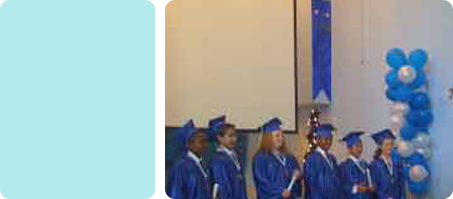
Fifth Grade
“Prince William Academy teachers not only have the gift of knowledge, but also the great ability to embrace each child as their own. Through continuous patience and encouragement, our children blossom with confidence….” – From PWA’s Parental Assessment of Teachers
In fifth grade, our students continue to increase their communications skills, and they employ those skills by giving various presentations throughout the year. As they hone their writing skills, they plan, write, revise, and edit their work to describe, entertain, and explain.
Our fifth grade standards for science emphasize the importance of selecting appropriate instruments for measuring and recording observations. Science skills from preceding grades, including questioning, using and validating evidence, and systematic experimentation, are reinforced at this level.
Grade Five Curriculum Overview

Language Arts
Students compose a variety of written texts with a main idea, coherent organization, and sufficient detail. The students are able to justify and defend their ideas both orally and in writing. These students write multi-paragraph essays, persuasive letters, compositions and reports with sources cited. For reading, these students apply comprehension strategies to literary and expository texts. Fifth graders are able to summarize text and make inferences, and can identify plot, main idea, theme, and cause and effect relationships.
Mathematics
In fifth grade, our students continue to increase their problem solving skills. By the end of the school year, they have learned to solve basic algebraic functions such as exponents and order of operations, to solve geometric conceptual problems, and to use various methods of measurement and analysis to understand the meaning of the data and basic statistical terms. Students use ratios to compare data sets, make conversions within a given measurement system, make geometric constructions and classify three-dimensional figures, and solve linear equations in one variable. While learning mathematics, students are actively engaged, using concrete materials and appropriate technologies such as calculators and computers.
Science
Students continue to use the hybrid science curriculum to investigate increasingly complex scientific concepts. These concepts include the development and understanding of the nature of science, data collection and analysis, sound and light, properties of matter, the cellular makeup of organisms, characteristics of the oceans, and Earth’s changing surface. Students conduct science experiments in the science lab on a weekly basis. They are also responsible for researching, planning, conducting, and presenting science fair projects. All students complete science fair projects and participate in the school-wide science fair. During science lab, students work individually, in small cooperative groups, or complete whole group exploratory learning activities.
Social Studies
United States History to 1865
Students study the history of America until 1865. They explore the roots of the American people, the formation of the 13 colonies, and the creation of a new nation. The curriculum also examines the American Revolution, the Constitution, and westward expansion.
Fine Arts
Students are introduced more formally to art history, with a focus on impressionism, pointillism, and abstract art. Techniques such as impasto, glazing, gradation, plein air, grisaille, hatching and cross-hatching are studied. Students also master the use of focal points in their artwork.
Technology
Students continue to develop their keyboarding skills, demonstrate an understanding of computer theory, develop basic technology skills and vocabulary, select and use technology appropriate tasks and operate peripheral devices. Students begin to process, store, retrieve, and transmit electronic information. Furthermore, these students build upon their keyboarding skills and their knowledge of various publishing programs to create a three- to four-page document using their knowledge of word processing.
Within these publishing applications, students create, edit, and format a document with text and graphics. They also develop and populate a spreadsheet with data, and learn to create and present a multimedia presentation. Finally, our fourth and fifth grade students demonstrate the ability to choose appropriate resources when completing assignments in various content areas, and learn to engage in proper and safe communications using a variety of communication tools and software.
Music
Fifth graders sing in tune with a clear tone quality, and demonstrate beginning choral behaviors and group singing skills. Building upon skills from previous years, students learn to identify and explain music forms of rondo, theme, and variation. They are also able to identify music symbols within a music composition and explain their functions. Fifth graders explore music theory and demonstrate an understanding of music and its relationship to history, culture, and other fields of knowledge. They also participate in various performances throughout the year, including the end-of-the-year musical.
Physical Education
Students continue to develop strength, endurance and flexibility, as well as gross motor skills, hand-eye coordination, and leg muscle development. They participate in a variety of activities that focus on whole group participation and teamwork so that they develop good practices while playing team sports/activities.
World Languages Program
Students make introductions and ask for and give information. Grammatical topics covered include irregular verbs, and definite and indefinite words. Students are able to make requests and describe things, and learn how to agree and disagree. Students engage in writing and learn how to ask questions. They also learn how to explain their likes and dislikes. The students engage in directed activities and dialogues. Fifth graders learn more complex phrases and idioms.
Language teachers engage their students in singing songs that develop a child’s musical talent and ear for correct pronunciation and intonation. Three times a year, students participate in special performances for their parents during the Winter Program, Mother’s Day program, and an end-of-the-year program.







